A global network of scientists on Bluesky Social
We have worked out a network of scientists and researchers on the new social media platform Bluesky Social! And a new global list of 100 science ‘influencers’ on the new microblogging alternative for those who are tired of X.
Some call it the new scientific Twitter. And Bluesky Social does indeed look, and feel like, the good old Twitter a few years ago before it turned into X with all its problems and controversy.

According to CEO of Bluesky Social Jay Graber, their new logo ‘symbolizes … the Twitter bird freed from a closed platform to fly in Bluesky’s open ecosystem.’
And the cool thing is, my good friend Lasse Hjorth Madsen and I have used a nifty method to find some of the most influential scientists on the new platform. Get an overview here.
The method follows on from my annual TwiLi Index of recent years, which was a cheeky alternative measure of scientists’ ‘impact’ for the Nordic region, based on Twitter (X) and LinkedIn following numbers.
The idea is to better understand how scientists shape networks with each other, and build communities of interest on the platform. And on scientific BlueSky, as can be seen on the interactive graph here. you can so far see several large lumps of research specialties:
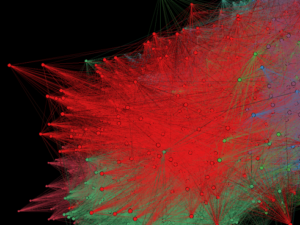
Political Science
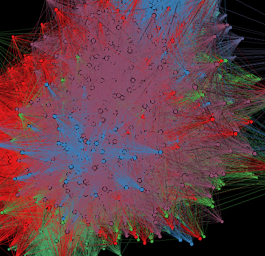
Psychology, neurology
There is the political science community (left, bright red), psychology, neurology and cognitive science (right, pink), social policy and economics community (pea green), biology (bluish purple), microbiology and genes (light blue), history (reddish purple), law (another bluish blue) that somehow cuts through the history community.
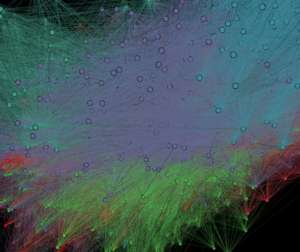
Biology
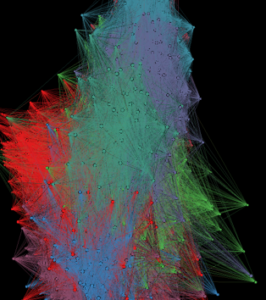
Social Policy
Click and have a look on the interactive visualization. Can you find any more communities?
We built the network using an iterative algorithm that works like this: We
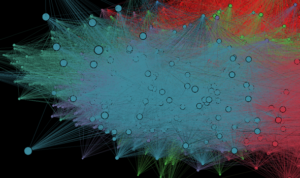
Microbiology and genes
started off with a list of hand-picked members of the scientific community,
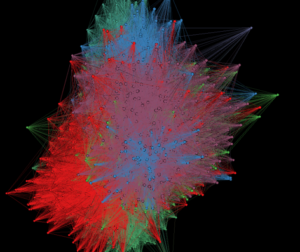
History
then we expanded the network step-by-step, finding the scientists on Bluesky that they followed, and subtracting those that were not followed by a substantial number from the existing network.
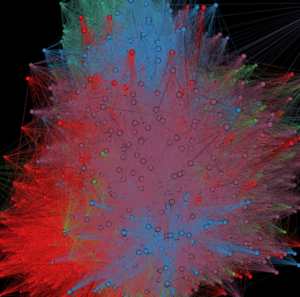
Law
We then used a key term search to subtract those that did not have a bio description that indicated an affiliation with the scientific community. Then we did the process again and again, until we were not getting substantial numbers of new members.
The result? A science-oriented network of 8,949 scientists on Bluesky. Many, but not all, do research at a research institution. A few are science writers, independent researchers, or work at private organisations.
With this network established, we then computed centrality measures, like Betweenness centrality or PageRank to identify members that may be particularly influential.
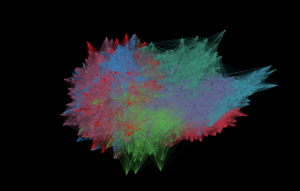
Our network of Bluesky scientists looks like an alien spaceship in a dark universe.
Over at the list of Influential Scientists, we have a table with the top-100 members of the network, ranked by centrality. Feel free to explore the list, or play with the interactive Network Visualisation of course. See if you can find yourself!
By the way: Bluesky Social, just like Mastodon, is an alternative to X (former Twitter). And one that for a newcomer is very easy to get a hang of.
But in direct competition X is still massively holding its own in terms of engagement as of February 2024. And the migration away from X is more a migration to a different type of platform like LinkedIn, rather than a migration to its microblogging competitors.
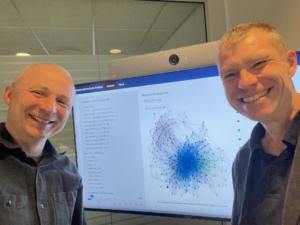
This was from when we were working on the TwiLi index two years ago. But we are just as handsome now!
My prediction? I think the old scientific Twitter has seen a ‘research field community migration’, where some fields have seen big migrations away from X, while others have stayed. And research communities tend to migrate together, as the large presence of political scientists on Bluesky bears witness to.
X could still make a comeback in science! Some of the new features on X work well with the scientific community. The circles function allows you to post to a smaller group of your own followers, and the ‘X spaces’ live talk feature is good for talks and debate.
Only time will tell.
I appreciate any comments or thoughts!
Does your department, faculty or university need to boost the international impact and career of your researchers? Here is more about my courses in social media for researchers. See other Mike Young Academy services here.

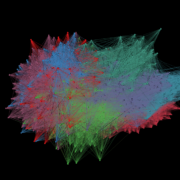


Leave a Reply
Want to join the discussion?Feel free to contribute!